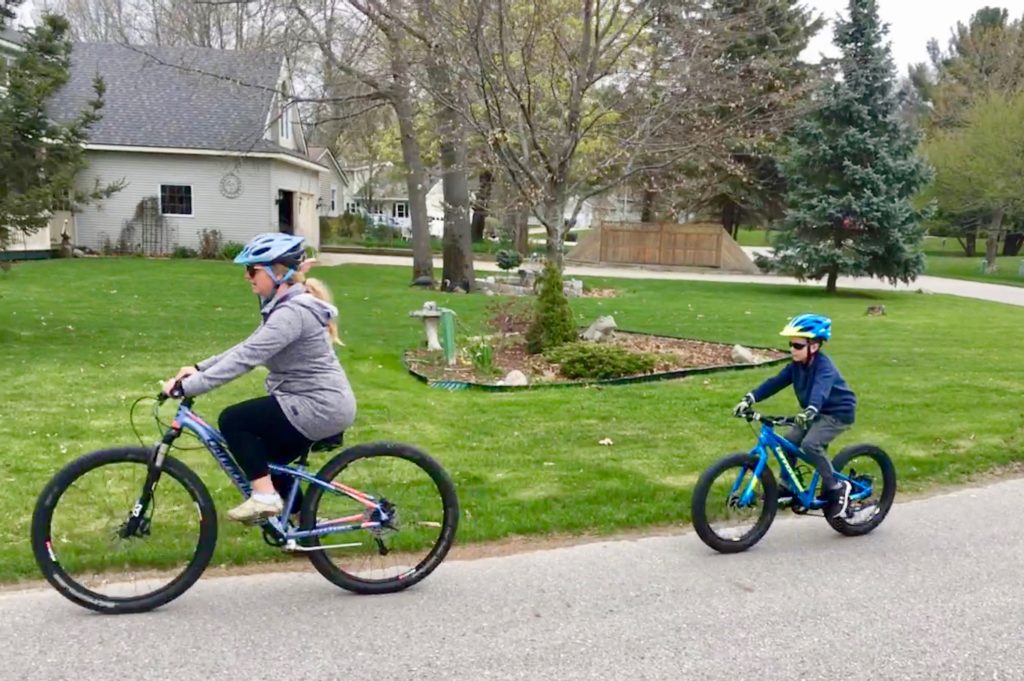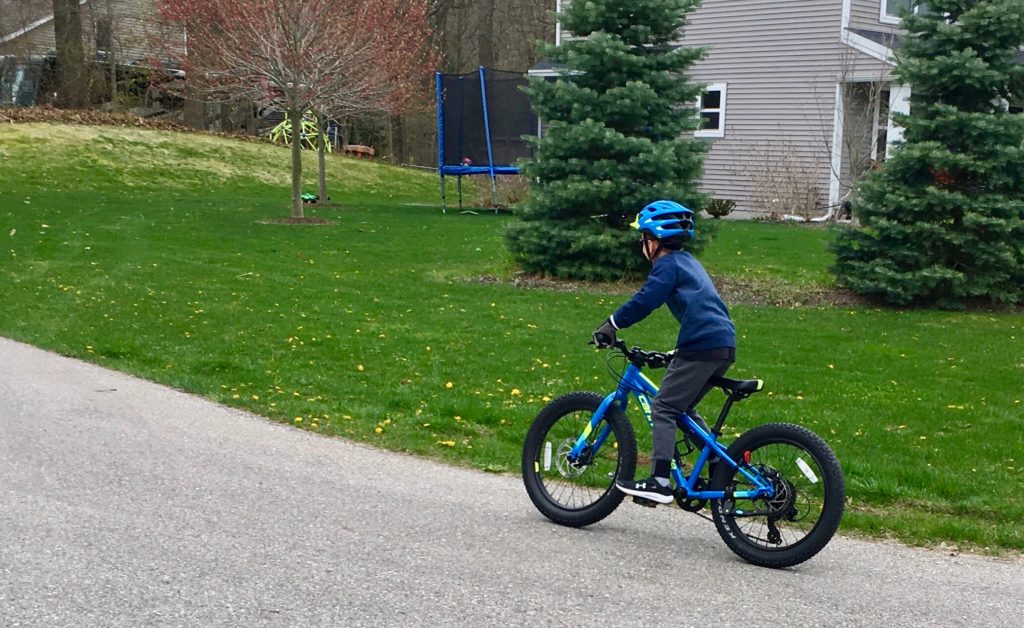By Kerry Irons, Pedal Holland
As the weather gets nicer, it’s easier to get children outside for biking and walking while following facemask and social distance guidelines. But other safety measures should be taken too – even after the COVID-19 crisis passes.
Parents and caregivers can help children learn safe skills and behaviors by providing repeated instruction and modeling.
Children who are 4 to 6 years old are entering a time when their physical and mental abilities allow basic walking and sidewalk bicycling safety skills to be introduced, discussed, and practiced.
Children 7 to 9 years old can continue expanding their pedestrian and bicycling abilities and knowledge through more education and practice with adult supervision.
But remember, 7 to 9 year olds are developing and gaining skills at varying rates. There are skills that some 7 year olds can master that present a challenge to some 9 year olds. Adults need to recognize this range of abilities and tailor the teaching and experiences appropriately.
Children age 10 and older continue to develop their physical, cognitive and psychosocial abilities.
With proper training and experience, ages 10 to 12 is when children can begin to safely ride bicycles in the street.
Parents can teach and reinforce judgment skills by walking and bicycling with their children and modeling safe behavior. Young children need to walk with an adult to practice safe street crossing behavior. Parents should wear bike helmets, because if children see it is OK for mom and dad to not wear one, they won’t wear one either when they are out of their parent’s sight.
Attention-switching and concentration are cognitive skills that children are developing throughout childhood, so they often need extra help focusing on the important information in a crossing situation.
Children need help from adults to repeat many times the process of “stop, wait, listen and look” while crossing the street before they can complete it safely by themselves. Also, asking “Can you see a car?” is more effective than “Look both ways.” The latter can become a ritual behavior rather than an action to spot traffic.
Parents can “narrate” their good behaviors, telling their children how they are looking for cars, preparing to stop, watching the driver’s face, estimating vehicle speed, etc. Parents can do this while driving as well, imparting traffic awareness and the logic process used to safely navigate traffic.
The ultimate goal of a parent’s time spent discussing and modeling safe walking and cycling with children – and giving them opportunities to practice – is to help children become safe, confident and independent pedestrians and bicyclists.
Those children will be able to recognize and pick the best places to walk, ride, cross, and behave as safely as possible near traffic. They will also grow up to become better drivers because they understand how to share the road with people on foot and bicycle.
Kerry Irons is a retired chemical engineer who has lived in Holland for five years. Irons is a lifelong cyclist who is a member of Pedal Holland, which advocates for bicycle safety in Holland.
Children and traffic: A dangerous mix Understand children’s limitations in dealing with traffic. Remember that children:
Have about a one-third narrower field of vision than adults.
Cannot easily judge a car’s speed and distance.
Assume that if they can see a car, its driver must be able to see them.
Cannot readily tell the direction a sound is coming from.
May be impatient and impulsive.
Concentrate on only one thing at a time; this is likely not to be traffic.
Have a limited sense of danger.
Often mix fantasy with reality.
Imitate the (often bad) behavior of others, especially older children and adults.
Given children’s limitations, drivers should:
Be especially cautious where children walk, ride or play.
Reduce speeds around children.
Stop completely at stop bars and crosswalks.
Be prepared to stop suddenly.
The Safe Routes to School (SR2S) program has a great guide on children’s bike and pedestrian safety at http://guide.saferoutesinfo.org/pdf/SRTS-Guide_Education.pdf
This Week’s Sustainability Framework Theme
Transportation: The movement of people, goods, and services within the area is an evolving system that links us to our regional, national and global networks.
ABOUT THIS SERIES
Living Sustainably is a collection of community voices sharing updates about local sustainability initiatives. It is presented by the Holland-Hope College Sustainability Institute, a joint project of Hope College, the City of Holland and Holland Board of Public Works. Go to www.hope.edu/sustainability-institute for more information.



